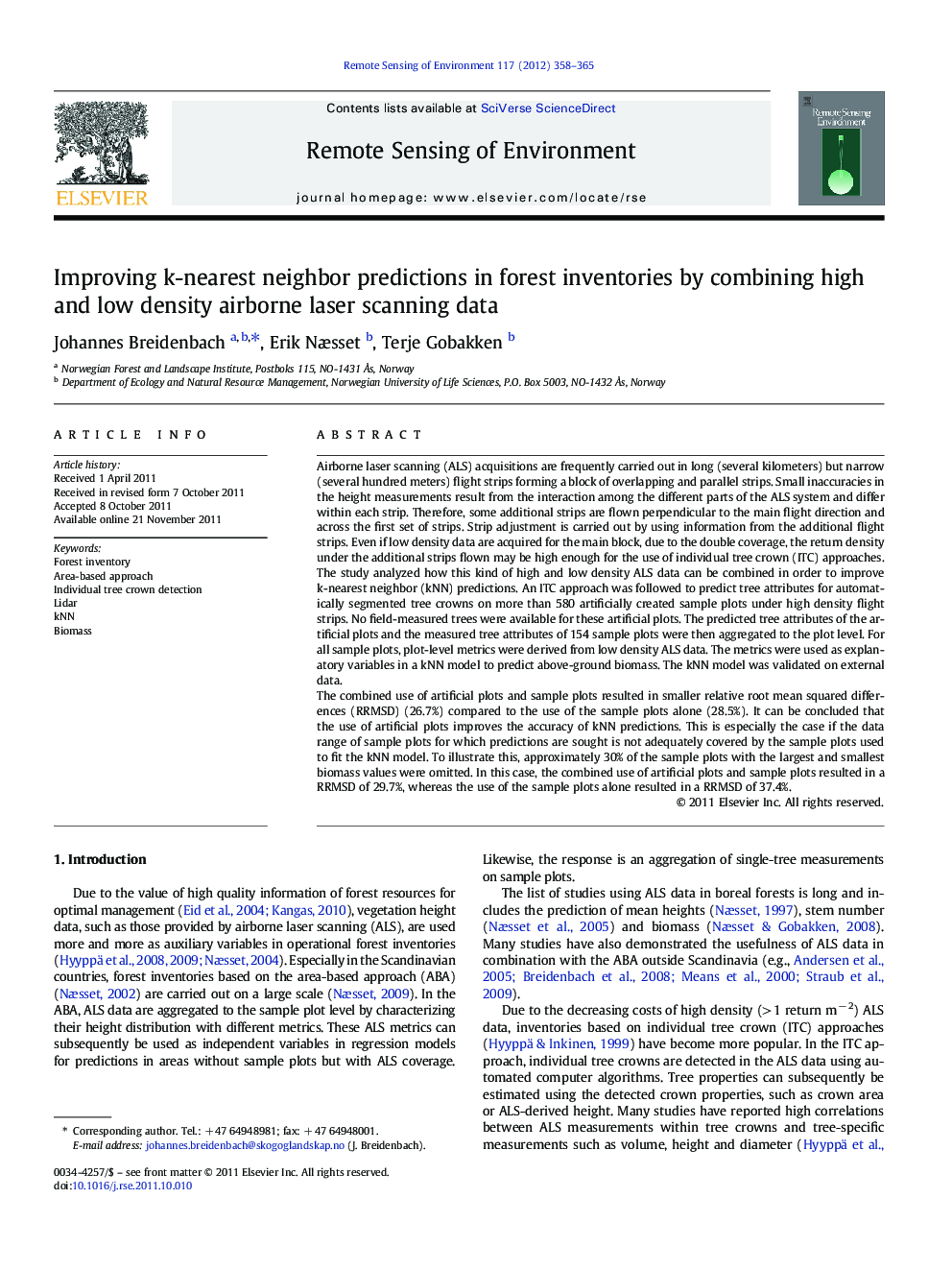| کد مقاله | کد نشریه | سال انتشار | مقاله انگلیسی | نسخه تمام متن |
|---|---|---|---|---|
| 4459277 | 1621283 | 2012 | 8 صفحه PDF | دانلود رایگان |

Airborne laser scanning (ALS) acquisitions are frequently carried out in long (several kilometers) but narrow (several hundred meters) flight strips forming a block of overlapping and parallel strips. Small inaccuracies in the height measurements result from the interaction among the different parts of the ALS system and differ within each strip. Therefore, some additional strips are flown perpendicular to the main flight direction and across the first set of strips. Strip adjustment is carried out by using information from the additional flight strips. Even if low density data are acquired for the main block, due to the double coverage, the return density under the additional strips flown may be high enough for the use of individual tree crown (ITC) approaches. The study analyzed how this kind of high and low density ALS data can be combined in order to improve k-nearest neighbor (kNN) predictions. An ITC approach was followed to predict tree attributes for automatically segmented tree crowns on more than 580 artificially created sample plots under high density flight strips. No field-measured trees were available for these artificial plots. The predicted tree attributes of the artificial plots and the measured tree attributes of 154 sample plots were then aggregated to the plot level. For all sample plots, plot-level metrics were derived from low density ALS data. The metrics were used as explanatory variables in a kNN model to predict above-ground biomass. The kNN model was validated on external data.The combined use of artificial plots and sample plots resulted in smaller relative root mean squared differences (RRMSD) (26.7%) compared to the use of the sample plots alone (28.5%). It can be concluded that the use of artificial plots improves the accuracy of kNN predictions. This is especially the case if the data range of sample plots for which predictions are sought is not adequately covered by the sample plots used to fit the kNN model. To illustrate this, approximately 30% of the sample plots with the largest and smallest biomass values were omitted. In this case, the combined use of artificial plots and sample plots resulted in a RRMSD of 29.7%, whereas the use of the sample plots alone resulted in a RRMSD of 37.4%.
► Improvement of area-based approach k nearest neighbor predictions using an individual tree crown approach.
► Synergistic use of high and low density airborne laser scanning data.
► Reduction of extrapolation bias and data gaps in kNN predictions.
Journal: Remote Sensing of Environment - Volume 117, 15 February 2012, Pages 358–365